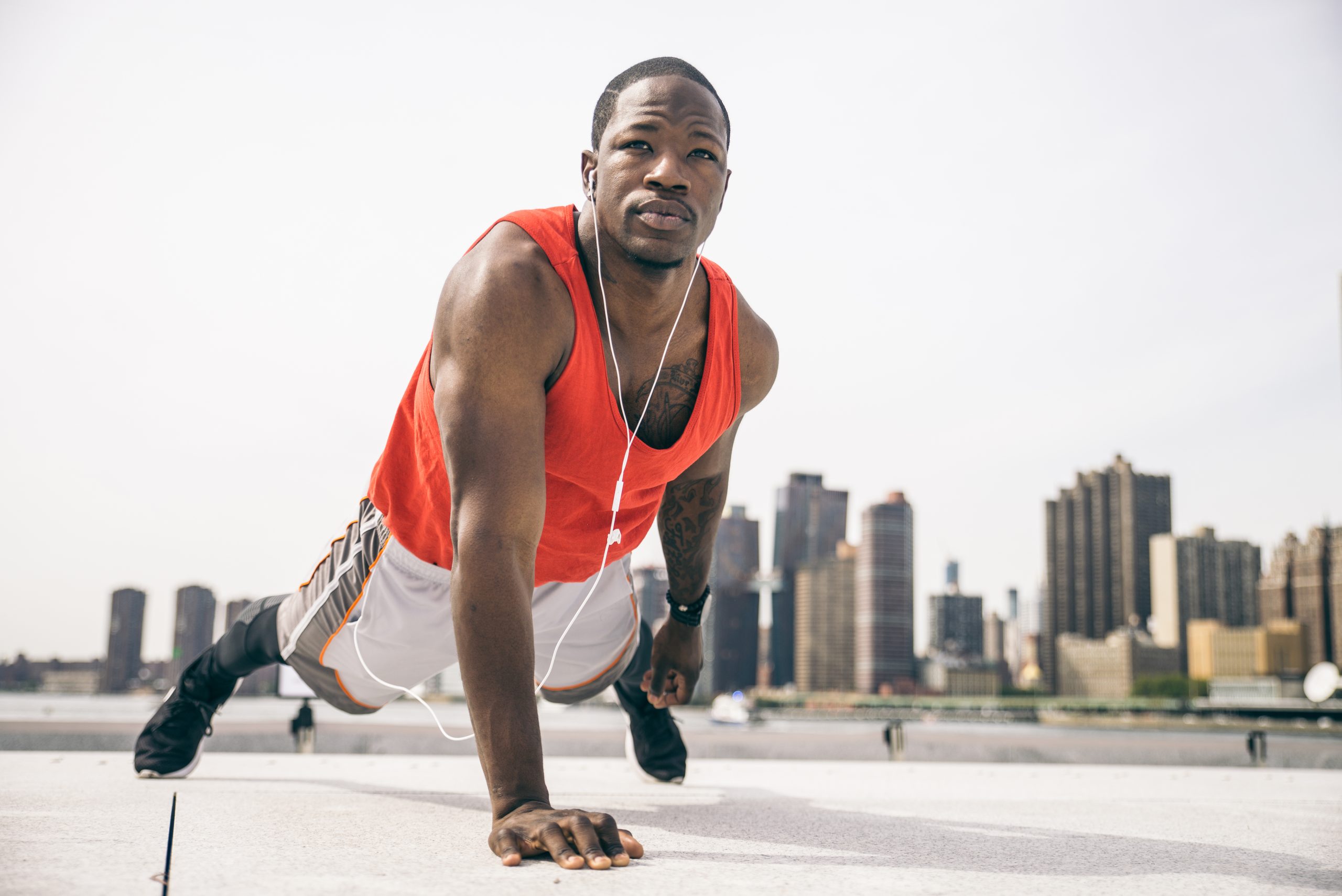Introduction
Greetings, fellow runners and fitness enthusiasts! The value of strength training for runners cannot be emphasized, regardless of experience level or if you’re putting on your running shoes for the first time. This extensive guide will explore the top strength training routines designed especially for runners in 2023. Prepare yourself for an experience that will improve how well you perform on the pavement and your general health.

STRENGTH TRAINING FOR RUNNERS
Understanding the Basics
Let’s lay the groundwork for understanding the significance of strength training for runners, particularly those new to the sport, before getting into the specifics of the practice.
The Synergy of Strength and Running
Strength Training for Runners in addition to just putting one foot in front of the other, running requires complex synchronization, joint motion, and muscular contact. Strength training serves as the backbone to support and enhance these elements, preventing injuries and improving efficiency.

Benefits Beyond the Track
Strength training helps to build a sturdy physique in addition to muscular growth. Beyond just your running shoes, the advantages extend to your general health and longevity, from improved metabolism to greater bone density.
Crucial Strength Training Activities for Marathoners
Let’s now dissect the top strength training activities for runners, grouping them according to target muscle groups and how they affect your running efficiency.
Upper Body Strength
Push-ups for the Triceps and Chest
The push-up is a significant compound exercise that works your core, triceps, and chest. Strengthening the upper body helps runners maintain a steady and effective arm swing, which allows them to avoid becoming tired during lengthy runs.
Beginner Tip: As your strength improves, progressively go on to floor push-ups, beginning with incline push-ups on a stable platform.
Pull-Ups (Back and Biceps)
A strong back enhances posture and helps maintain a steady gait. Pull-ups target your back and biceps, promoting a well-rounded upper body strength crucial for maintaining proper running form.
Beginner Tip: If full pull-ups are challenging, try assisted pull-ups or use resistance bands for support.
Core Strength
Planks (Core)
A stable core is the anchor for efficient running. Planks engage your body, including the abdominal muscles and lower back, helping you maintain an upright posture and reducing the risk of lower back pain.
Beginner Tip: Start with short intervals and gradually increase the duration as your core strength improves.
Russian Twists (Obliques)
Running involves more than just forward motion; your body twists with each stride. Russian twists target the obliques, improving rotational stability and minimizing the risk of injuries related to torsion.
Beginner Tip: Initially, perform this exercise without weights, focusing on controlled movements.
Lower Body Strength
Squats (Quadriceps and Glutes)
The glute, hamstring, and quadriceps are worked during squats. They are a powerful workout. Building strength in these areas contributes to powerful strides and better shock absorption, reducing the strain on your joints.
Beginner Tip: Start with bodyweight squats, ensuring proper form before adding weights.
Lunges (Legs and Glutes)
Lunges target individual legs, addressing muscle imbalances and enhancing stability. This unilateral exercise mimics the single-leg running movements, making it a valuable addition to your strength training routine.
Beginner Tip: Begin with stationary lunges before progressing to walking lunges as your strength improves.
Flexibility and Mobility
Yoga and Dynamic Stretching
Although dynamic stretching and yoga are not the same as traditional strength training, they may significantly increase your flexibility and range of motion. Consequently, the likelihood of injury is reduced, and the running stride becomes more efficient.
Beginner Tip: Start with beginner-appropriate yoga poses and work up to more challenging ones.

Crafting Your Strength Training Routine
Now that we’ve covered the essential exercises let’s discuss integrating them into a well-rounded strength training routine that complements your running schedule.
Frequency and Consistency
When it comes to strength training, consistency is essential. Aim for two or three sessions each week at the absolute least to allow for enough recovery between exercises. Consistent effort over time will yield the best results.
Beginner Tip: Start with two weekly sessions and gradually increase frequency as your body adapts.
Balancing Act
Ensure a balanced approach to your strength training routine, targeting upper and lower body muscles. This balance must be maintained to avoid muscular imbalances that might cause harm.
Beginner Tip: Start with a full-body exercise regimen, and as you gain confidence, think about dividing it into days dedicated to your upper and lower bodies.
Integration with Running Schedule
Coordinate your strength training sessions with your running schedule for adequate recovery. Try strength training after an easy run or on non-consecutive days to prevent tiredness.
Beginner Tip: Try several times, such as morning, midday, or evening sessions, to see which are most comfortable for you.
Progressive Overload
As your strength increases, gradually increase the intensity of your workouts. This may include attempting more difficult workout variants, upping the weight, or increasing the number of repetitions.
Beginner Tip: Focus on mastering proper form before increasing the intensity. Gradual progression is critical to avoiding injuries.
Additional Tips for Maximum Impact
Listen to Your Body
Observe your body’s reaction to strength exercise. You must get immediate attention if you are experiencing chronic pain or discomfort. Seek advice from a qualified trainer or a medical expert as necessary.
Beginner Tip: Wait to push yourself too hard initially. Gradually increase the intensity to allow your body to adapt.
Fuel Your Body Right
Proper nutrition is vital for both strength training for runners. Ensure you consume enough protein to fulfill your general energy and muscle repair demands.
Beginner Tip: To create a well-rounded diet that supports your fitness objectives, speak with a nutritionist or dietitian.
Rest and Recovery
Rest is when your body repairs and strengthens itself. Ensure you sleep enough and incorporate rest days into your routine to prevent burnout and overtraining.
Beginner Tip: Aim for 7-9 hours of sleep per night and consider active recovery activities like walking or gentle yoga on rest days.
Stay Hydrated
Adequate hydration is crucial for general well-being and productivity. Throughout the day, continuously consume water, particularly before and after your exercises.
Beginner Tips: Always carry a water bottle and aim to consume eight glasses of water daily.
Conclusion
An excellent place to start on your journey to becoming a more robust, healthier version of yourself is with a strength training program designed to enhance your running performance. You’re investing in your general health and running stride when you include these workouts and advice in your program.
Recall that consistency is the key to realizing your running potential, and that development takes time. So, lace up those shoes, hit the pavement, and enjoy the empowering fusion of strength and stride in 2023. Strength Training for Runners. Happy running!








3 thoughts on “The Ultimate Guide to Best Strength Training for Runners in 2023”